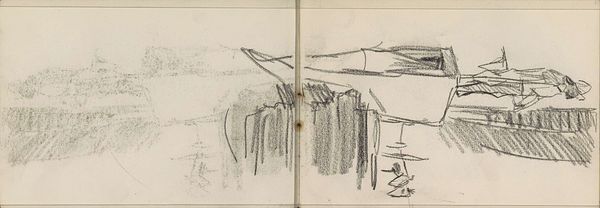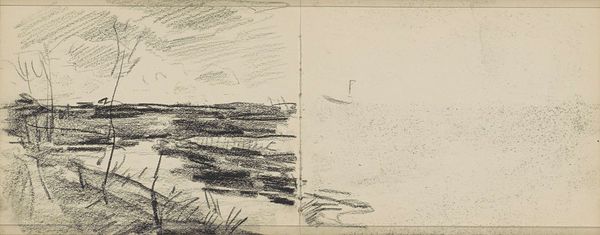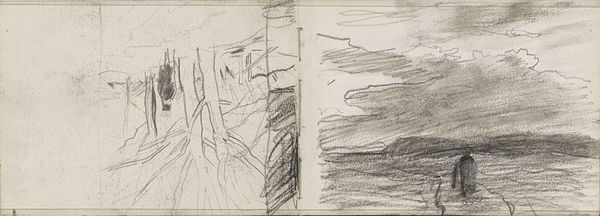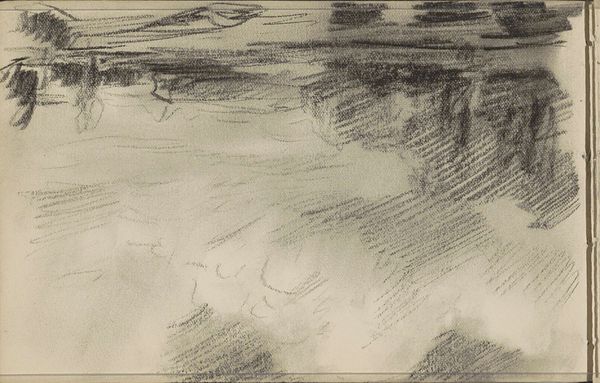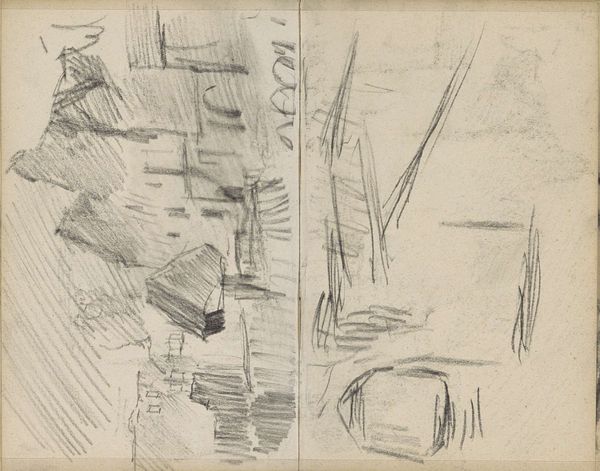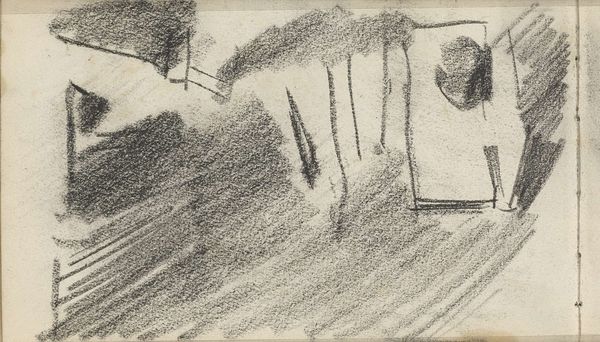
drawing, paper, pencil
#
pencil drawn
#
drawing
#
pencil sketch
#
landscape
#
river
#
paper
#
sketch
#
pencil
#
pencil work
Copyright: Rijks Museum: Open Domain
Johan Antonie de Jonge created this graphite drawing of a riverscape sometime between the late 19th and early 20th centuries. It encapsulates the changing relationship between people and the natural world. De Jonge was working at a time when industrialization was rapidly altering the Dutch landscape. Artists began to focus on capturing fleeting moments of natural beauty as a way to critique the disruptive effects of modernity. River landscapes were a popular subject, evoking a sense of tranquility and escape. The figure in the artwork may be seen as a reminder of the human presence within the natural world. To truly understand this piece, one would need to consider the broader context of Dutch art and environmental history during this period. Historical archives, exhibition records, and artist biographies could reveal how De Jonge positioned himself within the artistic debates of his time, and how his work reflected the changing values of Dutch society.
Comments
No comments
Be the first to comment and join the conversation on the ultimate creative platform.
